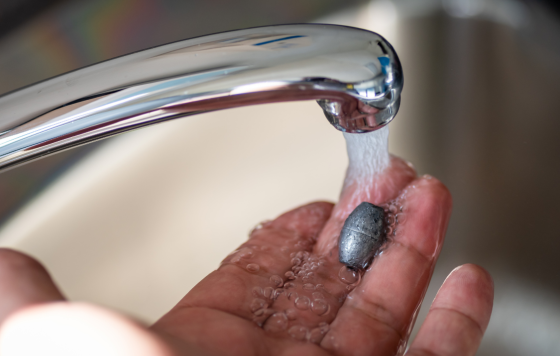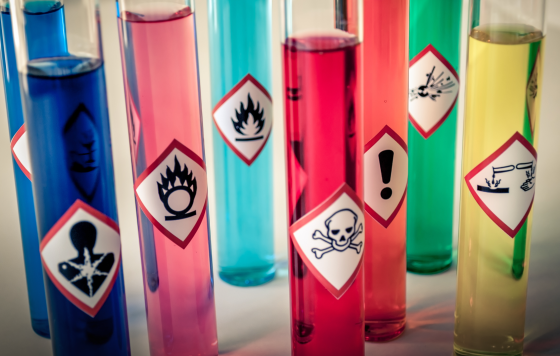
The referenced media source is missing and needs to be re-embedded.
by Jonathan A. Scott, Managing Editor for Clean Water Action News (on twitter @jscottnh)
The Obama Administration is proposing to fix huge gaps in Clean Water Act protections by clarifying what streams, wetlands and drinking water sources are protected under the law. Clean Water Action is mobilizing its members and the public to weigh in on the record in support of clean water.
The Administration’s intent is not to create new protections, but rather to restore longstanding protections that had been in effect from the time of the law’s passage during the Nixon Administration until about 12 years ago.
That’s when Bush Administration actions and polluter-friendly court decisions weakened the law by stripping away critical protections and creating confusion that made enforcing the law difficult.
As a result thousands of miles of streams and millions of acres of wetlands are more vulnerable to pollution and development than ever before. Drinking water sources for more than 117 million Americans – more than one-third of the all residents of the continental U.S. – are at risk.
But how about here in New Hampshire? or in your state?
According to the U.S. EPA, around 56 percent of New Hampshire’s small streams, roughly 1,311 miles of streams, supplying drinking water to more than 500,000 residents served by public water treatment systems.
But that’s not all that’s at stake. Part of living in New Hampshire is living rural or semi-rural. That means many more people like me don’t get their water from public water systems. Instead, we rely on private wells. While there has been less in-depth research on how streams and wetlands in New Hampshire and other states which have lost Clean Water Act protections over the past decade affect drinking water in private wells, there’s no question the impact is significant.
In New Hampshire and other states, there is a close relationship between the health of small streams and wetlands – including streams that may only run at certain times of the year or wetlands that are only fully “wet” in the spring, during snow melt season – and both the quantity and quality of water in many private wells. Pave over or pollute these resources in the wrong place, and the well water can be wrecked – perhaps permanently.
I love the water that comes out of our well, and losing this incredible drinking water resource is just something I won’t allow to happen. So I am motivated to act for selfish, personal reasons, too. My opinion alone doesn’t carry a lot of weight, which is why I need my neighbors – all of them on private wells, too – and anyone reading this blog to join with me to make sure this effort to fix the Clean Water Act is successful.
EPA takes great pains to be as conservative as possible in its science-based projections of what water and how many drinking water consumers will benefit when Clean Water Act protections are clarified and restored, as is now proposed. This is appropriate because the numbers where scientific certainty is strong are impressive enough.
A few years ago, when news of these weakening changes first surfaced -- around the time of the Clean Water Act's 30th Anniversary, of all things -- I made some maps showing how New Hampshire's waters might fare. On the left, you'll see lots of blue (when I say NH is a "blue state" I'm not really talking politics). Those are a few of the water resources that depend on keeping our smaller streams and wetlands healthy and protected from pollution and development. On the right is where things stand today -- a water protection mess -- with the future of so much of our state's clean water now in question, if not outright jeopardy.
The referenced media source is missing and needs to be re-embedded.
The referenced media source is missing and needs to be re-embedded.
For anyone living in the middle of this – and I would include most New Hampshire residents, whether they’re on private wells or public water systems – the stakes are much higher than EPA’s numbers might suggest. The streams and wetlands in question are part of our state’s essential infrastructure, perhaps even more important than the highways and bridges which allow us to travel from place to place. Without clean water, healthy streams and thriving wetlands, New Hampshire – and most other states – would be quite different places.
The dangers of leaving these resources unprotected go beyond either esthetic considerations or drinking water for huge swaths of our population. Those alone are reason enough for this long-overdue action. But the recreation and tourism economy in New Hampshire and other states would not exist without clean water, and that accounts for millions of dollars of our state’s economy. Similarly, scores of businesses of all sizes depend on clean water, from craft brewing companies to small farms and high-tech manufacturing.
But the bottom line for me – and I suspect for you also – is this: much of what we like and appreciate most about where we live comes back to the water. We may not think about it every day – clean water is one of those things that’s easiest to take for granted. But once it’s lost to pollution or development, the damage is permanent. Then it’s too late. New Hampshire without its clean water, its rushing streams, quiet ponds, beautiful lakes and wetlands providing food, shelter and habitat for everything from salamanders to moose, would not be New Hampshire anymore.
Take Action Now If you feel the same way about your clean water and the places you and your family live, work and play, you need to take action now to make sure those things you love most are protected, now and for the future.Related Posts
Stay Informed
Get the latest updates and actions:
Thanks for signing up!
There was a problem processing your signup. Please try again.


